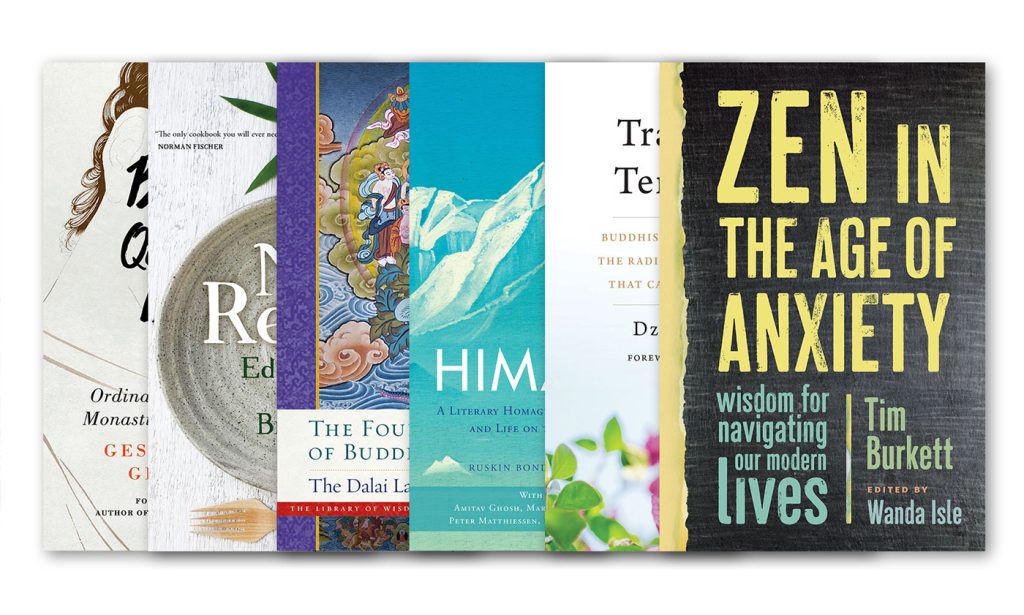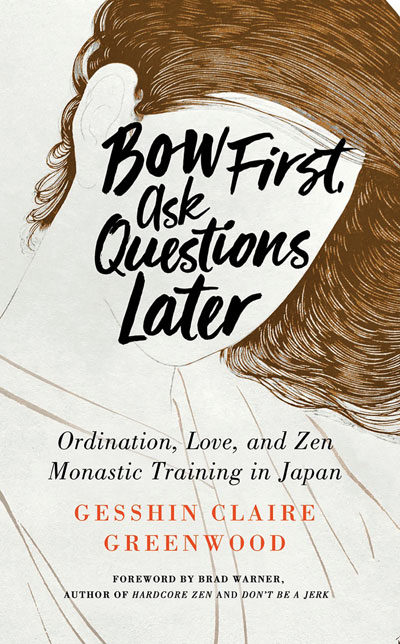
In Bow First, Ask Questions Later: Ordination, Love, and Monastic Zen in Japan (Wisdom Publications, May 2018, $17.95, 264 pp., paper), Gesshin Claire Greenwood tells an at-once relatable story of falling in love. But the romance isn’t between two teenage sweethearts; this story tells the evolution of a young, free-spirited American’s immersion in Buddhism.
An authorized Soto Zen teacher widely known for her blog “That’s So Zen,” Greenwood begins this memoir with her years of studying abroad in India and graduating from college, then seeking out ordination in Japan. After nearly five years of rigorous monastic training at Toshoji International Zen Center in Tokyo and Aichi Senmon Nisodo near Nagoya, Greenwood receives full dharma transmission in her late twenties from her teacher, Seido Suzuki Roshi.
But just as all relationships must go through phases, Greenwood’s romantic attachment to Zen Buddhism is threatened by the worldly realities of Japanese culture. Disburdened of her Zen dream, Greenwood returns to California, where she finds her ongoing dharma practice in the form of marriage, a writing career, and graduate research in East Asian Studies. It’s from this seasoned perspective that Bow First, Ask Questions Later reiterates a timeless teaching: that “real” dharma, even if we travel thousands of miles looking for it, can only exist within.

For Edward Espe Brown, author of the Zen cooking book No Recipe: Cooking as Spiritual Practice (Sounds True, May 2018, $17.95, 240 pp., paper), “cooking makes love manifest.” Drawing from memories of time spent with the Soto Zen master Shunryu Suzuki Roshi, Brown, who was the first head cook at Suzuki Roshi’s Tassajara Zen Mountain Center, offers No Recipe as an ode to spiritual cooking that focuses not on what to cook but how. The secret? An appreciation for the sacred quality of cooking and the ability to tune in to your hara, your seat of sensory experience or—in Zen talk—the chakra three fingerwidths below the navel.
No Recipe offers no recipes, but Brown, the current abbot of The Peaceful Sea Sangha in northern California, pulls lessons from his vast experience in the Zen tradition to offer an inspiring take on culinary creation. A poignant teaching from Brown’s “higher authority” (Suzuki Roshi) on how to react to a ban on salt; how to conduct the Ceremony of Eating Just One Potato Chip; and the value in appreciating a bland bowl of cereal’s “true spirit of the grain” are all included.
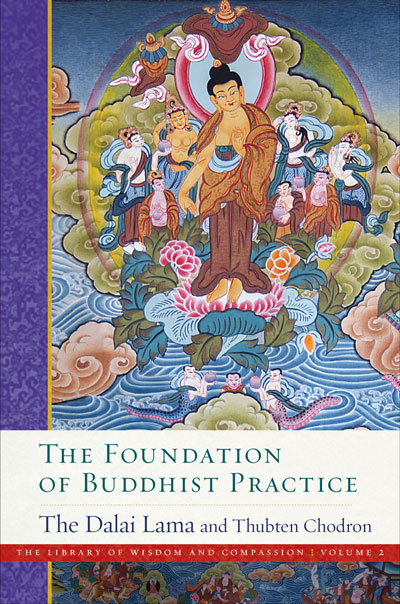
The Foundation of Buddhist Practice (Wisdom Publications, May 2018, $27.18, 400 pp., cloth), by the Dalai Lama and Thubten Chodron, is the second release in the eight-part Library of Wisdom and Compassion series. More than two decades in the making, the series arose from His Holiness and Thubten Chodron’s desire to offer comprehensive coverage of the Buddhist path to a global audience.
With a broad outline of the spread of Buddhist teachings and texts as well as straightforward advice for beginning practitioners, Approaching the Buddhist Path (2017)—the series’ first release—played the role of Buddhism 101. The Foundation, though still intended to function as a standalone title, builds upon a basic familiarity with the dharma by looking closely at topics like karma, cognition, traditional Tibetan meditations on lamrim [“stages of the path”], how to rely upon a spiritual mentor, and rebirth.
The Dalai Lama’s presentation of these subjects comes from the Indian Nalanda tradition but are labeled as nonsectarian; Thubten Chodron has added teachings from the Pali tradition for greater depth.
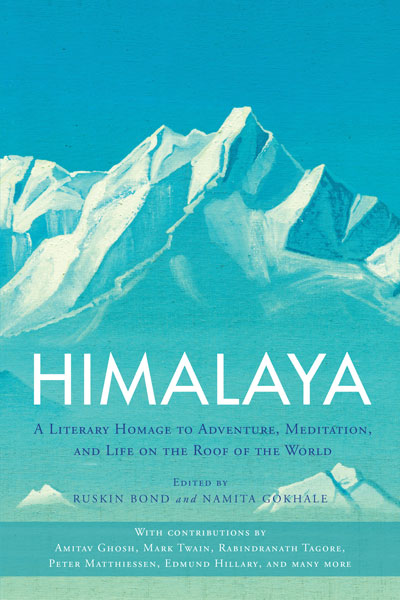
Many readers are likely unaware that American literary legend Mark Twain took a trip to Darjeeling, India, near the end of the 19th century. Fewer will know that he hunted 13 Bengal tigers in the jungles along the way. But such is one adventure story of many that fill the pages of Himalaya: A Literary Homage to Adventure, Meditation, and Life on the Roof of the World (Shambhala Publications, June 2018, $16.95, 320 pp., paper), an anthology of travel writing, memoirs, and meditations on the vast Himalayan landscape.
Himalaya’s editors, Ruskin Bond and Namika Gokhale, don’t shy away from early Western interpretations of the East—by way of example, Twain’s description of a Tibetan religious ceremony: “As a drama this ancient historical work of art was defective, I thought, but as a wild and barbarous spectacle the representation was beyond criticism.” But with essays from contemporary Nepali writers Manjushree Thapa and Jemima Diki Sherpa as well as such classic figures as Swami Vivekananda, Faxian, and Rabindranath Tagore, Himalaya offers a tribute to the mountains that blends history with modernity and romanticism with reality.
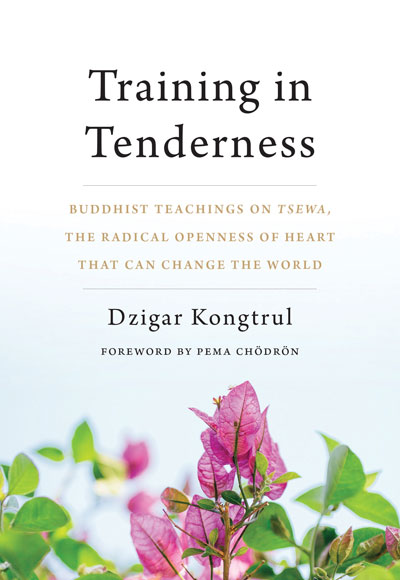
Dzigar Kongtrul Rinpoche’s new book, Training in Tenderness: Buddhist Teachings on Tsewa, The Radical Openness of Heart That Can Change the World (Shambhala Publications, May 2018, $14.95, 128 pp., paper), reminds us about Mahayana Buddhism’s most central teaching: that the seed of enlightenment already exists within us. Kongtrul Rinpoche refers to this seed as tsewa—the innate tenderness and potential for warmth that we all possess.
To tune in to it, we must first ask: where do positive qualities in our lives and in our minds come from? According to Kongtrul Rinpoche, the answer lies in our experiences of giving and receiving tsewa. Once this is recognized, we must nurture such experiences with mindfulness and vigilant introspection, gradually overcoming our chief impediment of selfishness.
This brief read communicates related teachings from Kongtrul Rinpoche’s Indo-Tibetan tradition, most notably from Chandrakirti, an influential 7th-century Indian Buddhist master who suggested that the cultivation of tsewa will bring a practitioner all the way to buddhahood. Whether it’s a mother’s love for her child or a dog owner’s uninhibited embrace of a four-legged friend, such experiences are the kernels of our own enlightenment as well as the key to lessening the world’s suffering.
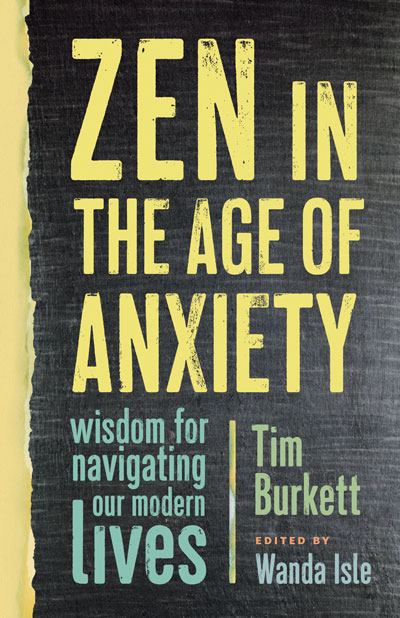
The Zen assessment “You are perfect as you are, but you can use a little improvement” is a principal line in Zen in the Age of Anxiety: Wisdom for Navigating Our Modern Lives (Shambhala Publications, June 2018, $16.95, 160 pp., paper), by Tim Burkett. You may recognize these famous words from Shunryu Suzuki Roshi; Burkett first heard them when he was practicing under the Soto Zen teacher in San Francisco during the mid-to-late sixties.
Now the guiding teacher at the Minnesota Zen Meditation Center in Minneapolis, Burkett uses his teacher’s advice to frame a thoughtful life manual for modern seekers and meditators—especially those who, like Burkett, lean away from the rigidity of formal religion. Burkett includes a series of practical “Doing the Work” meditations for dealing with life’s three “trance-inducing veils” of fear, anger, and anxiety. He also focuses on how these veils arise in issues relating to sex, money, and failure.
For Burkett, the Buddhist precepts are gifts, not rules, that frame a wholesome life. Zen in the Age of Anxiety can help nontraditionalists find their way with those gifts in hand.
Thank you for subscribing to Tricycle! As a nonprofit, we depend on readers like you to keep Buddhist teachings and practices widely available.
